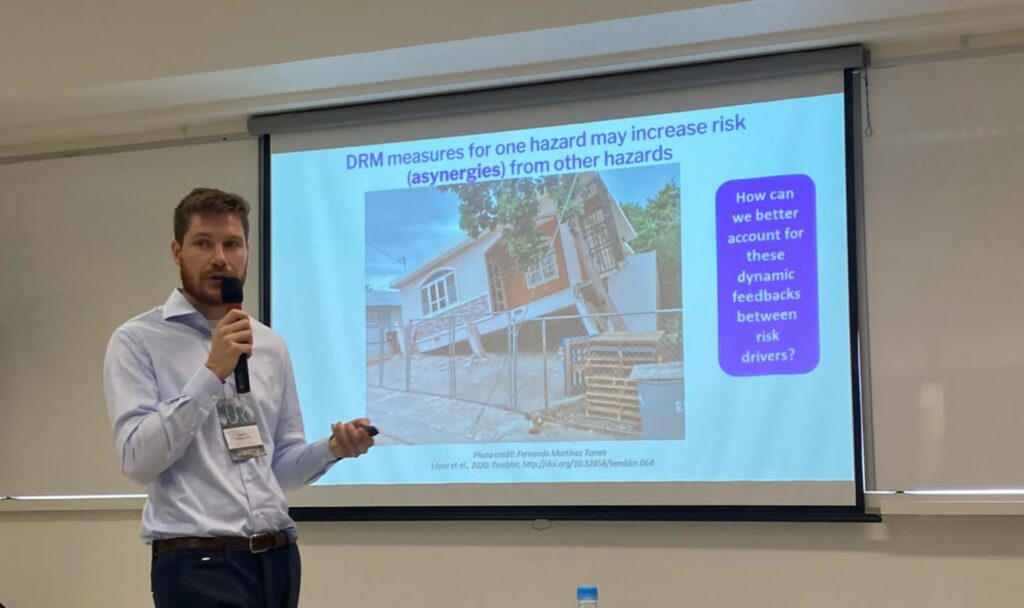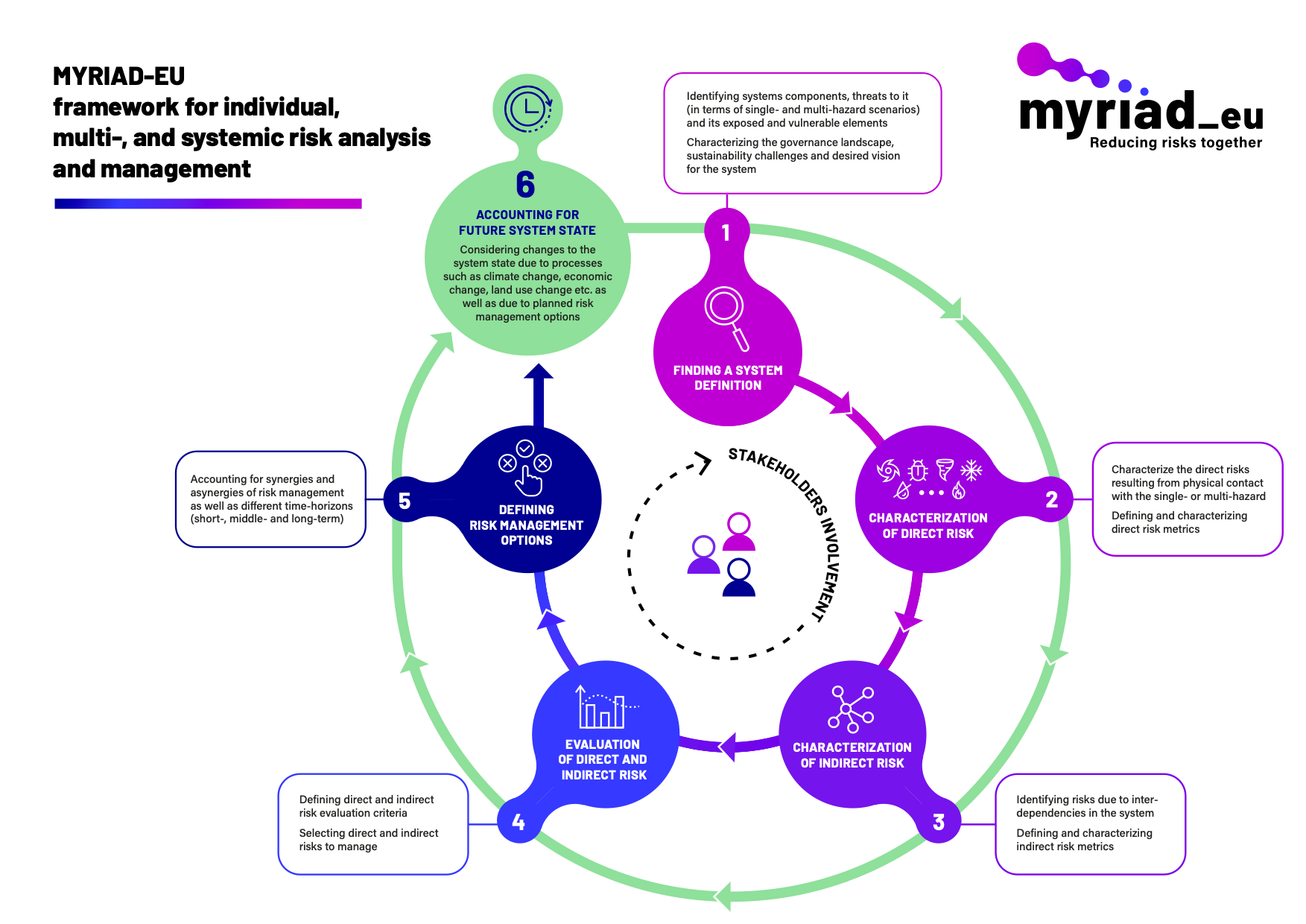
Multi-disaster risks in a diverse world
From 28th November – 2nd December 2022 the Understanding Risk conference (UR 2022) took place in Florianópolis, Brazil. The UR Conference is a biennale event that brings together risk managers, partitioners, and researchers to improve risk assessments and communication of risk information, helping integrate the information into policy and development planning.
Three representatives from MYRIAD-EU attended the conference last year and held a focus day session on bridging science to practice for multi disasters risk management in a diverse world, which provided them the opportunity to present MYRIAD-EU to the Disaster Risk Management (DRM) community. These representatives included Timothy Tiggeloven, Vrije Universiteit Amsterdam (VUA), Ana Clara Cassanti, Vrije Universiteit Amsterdam (VUA) and Roxana Ciurean, British Geological Survey (BGS). MYRIAD-EU is a pan-European project involving 16 institutions and six economic areas with the goal of co-developing a framework for multi-hazard, multi-sector and systemic risk management. By doing so the project enables decision makers, policymakers and risk practitioners to better manage and reduce risk.
Language & information access
The language around multi-disaster risk assessment needs to be more accessible, and information needs to be more readily available for risk practitioners. As such, Timothy Tiggeloven presented the terminology adapted from the MYRIAD Handbook, on multi-hazard risk and introduced the MYRIAD project.
Improving stakeholder involvement
Roxana Ciurean presented her findings related to the challenges impeding stakeholder involvement in multi-hazard risk management, which enabled her to share the MYRIAD Wiki and handbook.
Diversity & inclusion
Ana Clara Cassanti gave a presentation on accounting for different contexts within stakeholder involvement, highlighting the importance of diversity and inclusivity in decision making processes, a topic that rated highly among attendees.
Increasing multi-risk awareness
The Breaking Silos games was also introduced and played for the first time. Breaking Silos game is a serious roleplaying game that is designed to support various stakeholders (incl. policymakers, risk managers, researchers) in understanding and managing complexities of DRR measures in a multi-hazard risk setting which facilitates the movement away from hazard silo thinking. During the game, participants gained new insights into the difficulties that occur when faced with multiple hazards and potential adaptation strategies. The main challenges for participants were assigning and understanding their roles and creating a common understanding before diving into the risk elements of the game. Without prior knowledge or instruction, the players applied the steps of the MYRIAD framework. They first identified the system or actors at play, read their descriptions and wrote down their goals and targets, then they assessed the risks and looked at the relationships between the risks determining whether there was a direct or indirect risk. After this they evaluated the risk elements to be adapted and then re-evaluated their strategy given the change in system as a different hazard occurred, which provided them with new information to consider for risk management.
MYRIAD Framework
To conclude the MYRIAD framework was presented and similarities to the game were demonstrated. The MYRIAD framework provides a framework for individual, multi- and systemic risk analysis, and management. It involves considering the system and its components, determining the direct and indirect risks, evaluating said risks, creating a risk management strategy and assigning time horizons (e.g., short-, long-term) while also accounting for future system states (e.g., climate change). The framework has six steps and is characterised by stakeholder involvement throughout the process.

After the presentation of the MYRIAD framework a discussion took place for reflection, the feedback was directed at ensuring top-down and bottom-approach to create holistic assessments, considering the role of media and incorporating elements of diversity and inclusivity into the stakeholder involvement.
The session was very well received by those who attended. Much of the feedback received was reflective of the content presented by the MYRIAD-EU team such as the emphasis on inclusivity and diversity, which was expanded upon in Ana Clara Cassanti’s presentation. The suggestion of including media provided MYRIAD with insights into facilitating greater levels of inclusion within the project also linked well into Roxana Ciurean’s presentation.
